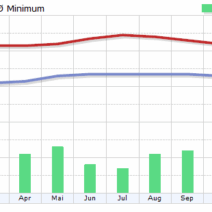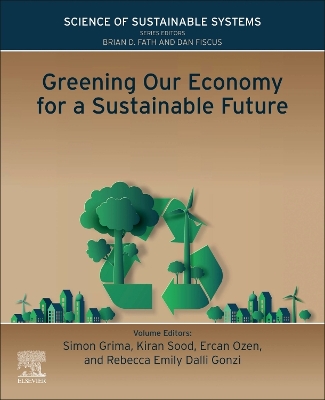Indonesia, an archipelagic nation rich in biodiversity and natural resources, is at the crossroads of industrial transformation. The nation grapples with the imperative of merging economic growth with ecological sustainability. As one of the world’s largest emitters of greenhouse gases, the urgency for Indonesia to pivot towards a more sustainable industrial framework is glaringly evident. This conversation about industrial shifts is not merely about regulatory compliance or meeting international obligations; it delves into a profound evolution of economic practices that can ultimately yield a cooler, more sustainable future.
The conventional industrial model in Indonesia has heavily relied on fossil fuels, deforestation, and unsustainable agricultural practices. These industries have significantly contributed to air pollution, loss of biodiversity, and immense carbon footprints. Consequently, the question arises: how does Indonesia navigate the dual challenge of enhancing industrial productivity while espousing environmental stewardship? The answer lies in an integrated approach prioritizing green technology, renewable energy, and sustainable practices.
A fascinating observation in Indonesia’s industrial shift is the increasing adoption of green technologies. Industries are beginning to embrace innovations that substantially reduce their environmental impact. For instance, the manufacturing sector is now exploring circular economy principles, wherein waste is transformed into a resource. This model encourages the recycling of materials, minimizes waste generation, and conserves natural resources. Such transformations could significantly lower carbon emissions directly associated with traditional manufacturing processes.
Additionally, the impetus for adopting renewable energy sources cannot be overstated. Indonesia is endowed with abundant natural resources, including solar, wind, and geothermal energy. The transition from coal and gas to renewable energy sources offers a promising avenue for mitigating the adverse impacts of climate change. Capturing solar energy in regions blessed with ample sunlight certainly stands out as a viable strategy. Concurrently, the development of wind farms in coastal areas represents another dimension of potential growth. This diversification enhances energy security while positioning Indonesia as a leader in sustainable energy consumption in Southeast Asia.
Moreover, the realm of green agriculture is experiencing a renaissance. Traditional farming practices are being re-examined and revamped to align with sustainable principles. Initiatives promoting organic farming methods and agroforestry are gaining momentum, significantly improving soil health and biodiversity. These practices not only sequester carbon but also yield healthier produce while supporting local economies. As urban populations burgeon, the demand for sustainably sourced food is escalating, prompting farmers to adopt eco-friendly practices. This paradigm shift in agricultural practices fosters resilience against climate-related challenges and ensures food security for future generations.
An essential component of Indonesia’s industrial strategy is the consideration of economic equity. Environmental degradation often disproportionately impacts marginalized communities. Thus, the transition towards a greener economy must be equitable and inclusive. Policymakers are recognizing the need to engage local communities in the decision-making processes regarding natural resource management. Such involvement not only fosters local stewardship of the environment but also generates alternative livelihoods through eco-tourism and sustainable practices. The alliance between economic growth and community development is crucial for building a resilient industrial landscape.
Investment plays a pivotal role in facilitating this industrial shift. Indonesia’s government is actively seeking partnerships with the private sector to drive funding and innovation. Creating incentives for businesses to adopt sustainable practices is paramount; this can manifest through tax breaks, subsidies for green technologies, or streamlined processes for acquiring permits for clean energy projects. Public-private partnerships (PPPs) serve as an effective conduit for addressing infrastructure needs while advancing sustainability goals.
Furthermore, Indonesia is strategically positioning itself on the global stage as a participant in international climate agreements. The commitment to reducing greenhouse gas emissions provides an impetus for regulatory frameworks designed to ensure compliance while supporting economic growth. As global markets increasingly favor sustainable products, Indonesia’s newfound emphasis on green industries can enhance its competitive edge. By embracing sustainability, Indonesian products could garner greater access to markets that prioritize eco-conscious consumption.
Despite the excitement surrounding Indonesia’s industrial transition, challenges abound. Resistance to change is a formidable barrier, particularly within industries entrenched in traditional practices. Education and awareness-raising campaigns are integral to fostering a culture of sustainability, as they empower both businesses and consumers to make informed choices. As the population becomes more cognizant of environmental issues, public demand for sustainable practices will likely compel industries to adapt.
In conclusion, Indonesia’s industrial shift towards a greener economy is poised to redefine its trajectory in combatting climate change. By embracing innovative technologies, renewable energy, and sustainable practices, the nation not only contributes to global environmental goals but also enhances its economic resilience. The path ahead is one of collaboration, education, and unwavering commitment to sustainability. As the world watches, Indonesia has the potential to emerge as a beacon of hope, illustrating that economic growth and environmental responsibility can, indeed, go hand in hand.






